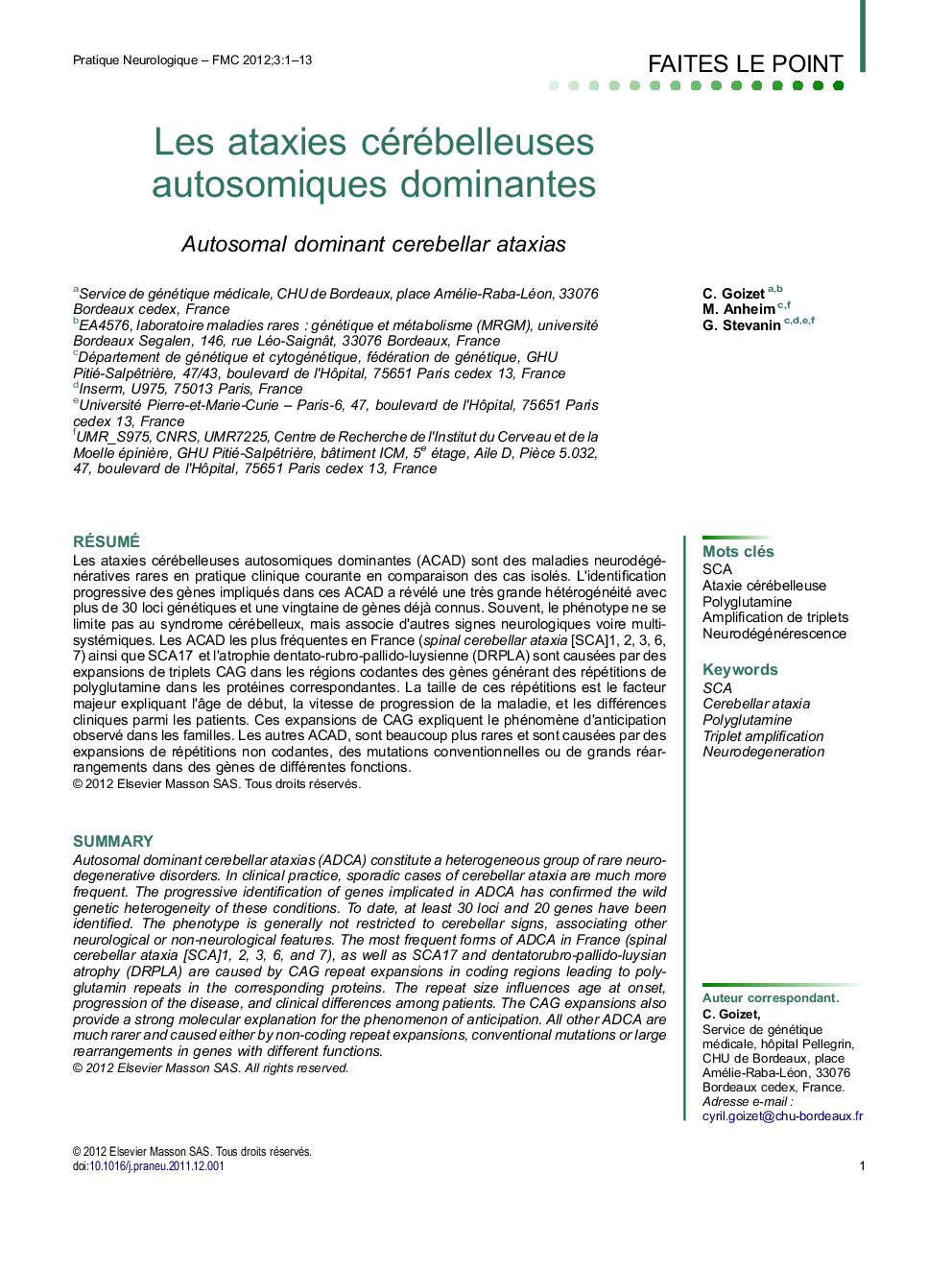| Article ID | Journal | Published Year | Pages | File Type |
|---|---|---|---|---|
| 3087405 | Pratique Neurologique - FMC | 2012 | 13 Pages |
Abstract
Autosomal dominant cerebellar ataxias (ADCA) constitute a heterogeneous group of rare neurodegenerative disorders. In clinical practice, sporadic cases of cerebellar ataxia are much more frequent. The progressive identification of genes implicated in ADCA has confirmed the wild genetic heterogeneity of these conditions. To date, at least 30Â loci and 20Â genes have been identified. The phenotype is generally not restricted to cerebellar signs, associating other neurological or non-neurological features. The most frequent forms of ADCA in France (spinal cerebellar ataxia [SCA]1, 2, 3, 6, and 7), as well as SCA17Â and dentatorubro-pallido-luysian atrophy (DRPLA) are caused by CAG repeat expansions in coding regions leading to polyglutamin repeats in the corresponding proteins. The repeat size influences age at onset, progression of the disease, and clinical differences among patients. The CAG expansions also provide a strong molecular explanation for the phenomenon of anticipation. All other ADCA are much rarer and caused either by non-coding repeat expansions, conventional mutations or large rearrangements in genes with different functions.
Related Topics
Life Sciences
Neuroscience
Neurology
Authors
C. Goizet, M. Anheim, G. Stevanin,
